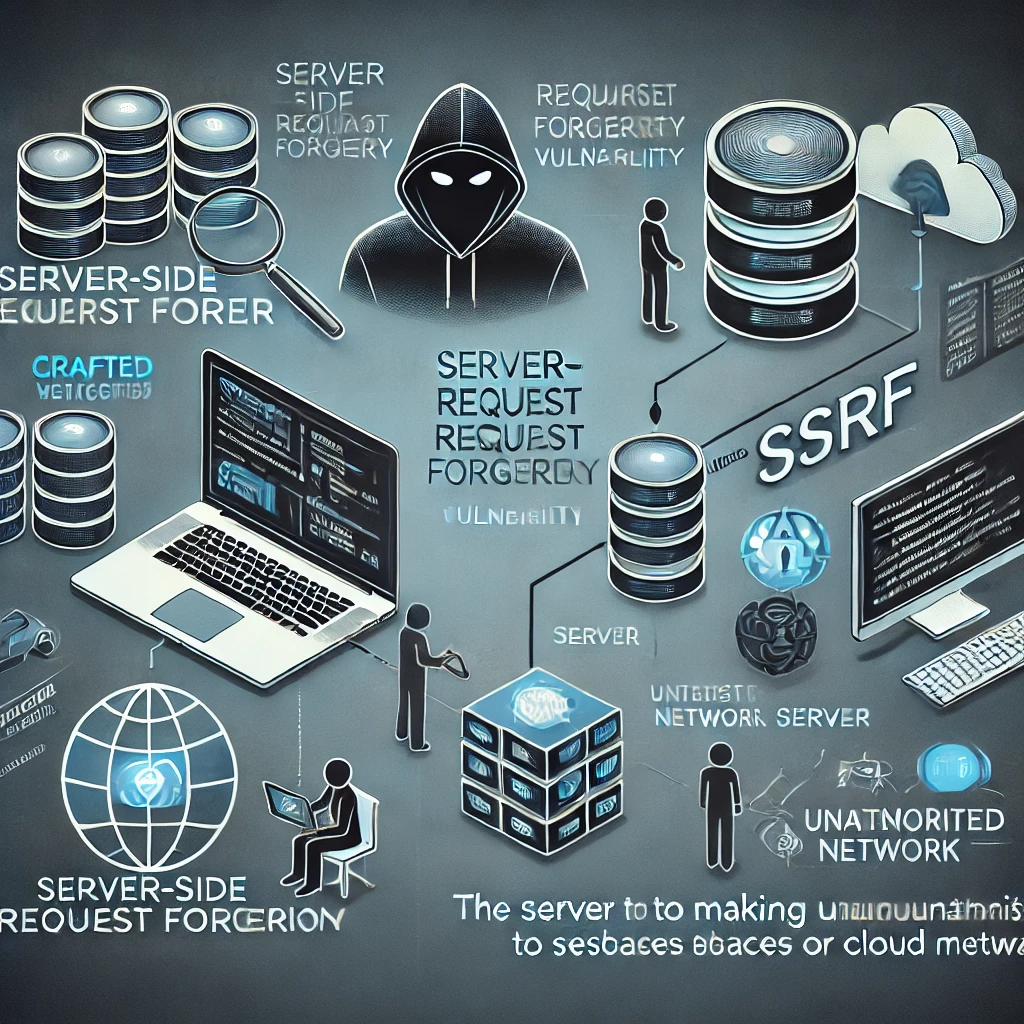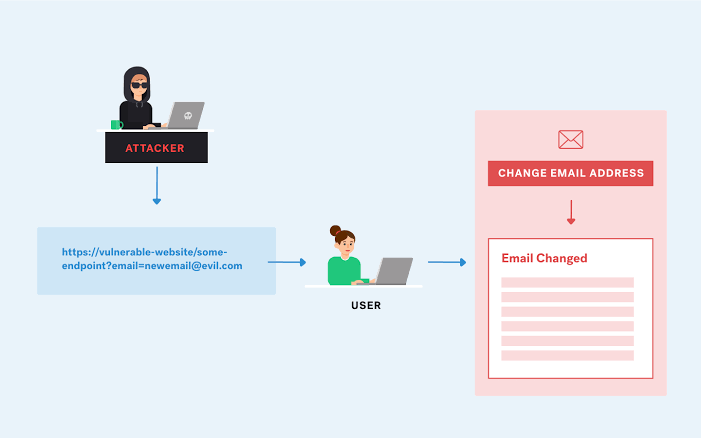Understanding SSRF Vulnerability: A Complete Guide
SSRF is a critical vulnerability that can compromise internal systems and expose sensitive data.

Server-Side Request Forgery (SSRF) is a web security vulnerability that allows attackers to make requests to unauthorized internal systems or external servers through a vulnerable server. This vulnerability occurs when a web application processes user-supplied URLs or input without proper validation.
SSRF attacks can lead to data leaks, unauthorized access to internal systems, and even the exploitation of private networks. In this guide, we’ll explain how SSRF works, its impact, and how to prevent it in simple terms.
How SSRF Works
When a web application accepts input, like URLs, and uses it to fetch data or perform actions on behalf of the user, it becomes a target for SSRF.
For example:
-
A vulnerable application accepts a URL input to fetch content.
-
An attacker submits a crafted URL that redirects the server to access sensitive internal resources (e.g., http://127.0.0.1/admin).
-
The server processes the request and returns information to the attacker, which should normally be inaccessible.
Types of SSRF Attacks
1. Basic SSRF
- The attacker sends a malicious URL to trick the server into accessing internal systems or external endpoints.
2. Blind SSRF
- The attacker cannot see the response from the server but can still infer actions (like DNS queries or HTTP responses) through other channels.
3. SSRF to Local File Access
- Some SSRF vulnerabilities allow attackers to read local server files by supplying file URLs (file://).
4. SSRF via Protocol Exploitation
- Attackers abuse other protocols like FTP or Gopher to exploit the server.
Impact of SSRF Vulnerabilities
1. Accessing Private Networks
- Attackers can reach internal services (e.g., databases, APIs) that are not exposed to the internet.
2. Data Leakage
- Sensitive data, such as metadata from cloud services or server configurations, can be retrieved.
3. Privilege Escalation
- SSRF can be chained with other vulnerabilities to gain full control over the server.
4. Denial of Service (DoS)
- Attackers can overload internal systems by sending a large number of requests through SSRF.
How to Prevent SSRF
1. Validate and Sanitize Input
- Do not trust user input. Strictly validate URLs and restrict them to known safe domains.
2. Whitelist Allowed URLs
- Use a whitelist of safe URLs or domains that the server is permitted to access.
3. Avoid Directly Using User Input in Requests
- Always process or filter user input before using it in server-side requests.
4. Block Access to Internal IPs
- Restrict server requests to local or private IP ranges (e.g., 127.0.0.1, 10.0.0.0/8).
5. Monitor and Log Requests
- Implement logging to detect suspicious activities and unusual access patterns.
6. Limit Permissions
- Configure applications and services to operate with the least privileges necessary.
7. Use Security Tools
- Employ web application firewalls (WAFs) and vulnerability scanners to detect and block SSRF attempts.
Testing SSRF Vulnerabilities
1. Submit URLs to Check Server Behavior
- Test how the server handles URLs, including http://localhost, http://127.0.0.1, and external domains.
2. Check for Blind SSRF
- Use DNS logging services (e.g., burpcollaborator.net) to test if the server makes requests to supplied domains.
3. Look for Open Redirects
- Check if the application redirects to external URLs without proper validation.
Conclusion
SSRF is a critical vulnerability that can compromise internal systems and expose sensitive data. By validating input, implementing whitelists, and using robust security measures, you can protect your applications against this threat.
Understanding SSRF and taking proactive steps to secure your applications will strengthen your overall security posture and reduce the risk of exploitation.
Leave a Comment
Releted Articles

Cross-Site Request Forgery (CSRF): A Comprehensive Guide
Cross-Site Request Forgery is a serious vulnerability that can compromise the security of web applications

The Ultimate Guide to SQL Injection (SQLi)
SQL Injection remains a significant threat to web application security.

Understanding Cross-Site Scripting (XSS): A Critical Web Vulnerability
Cross-Site Scripting is a significant threat to web security, capable of causing severe damage to both users and businesses.

Web Security : Safeguarding the Digital World
In today’s interconnected world, web security is more critical than ever. As businesses and






2 comments
CyberSmart
Jan. 29, 20250 replies CyberSmart
Ibrahim
Jan. 29, 20252 replies Ibrahim